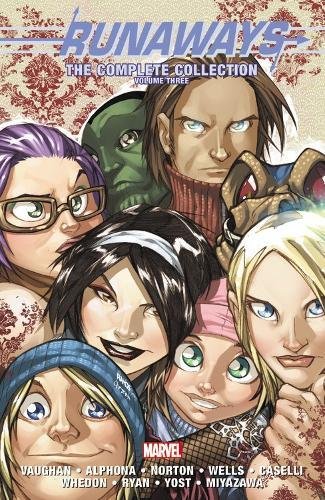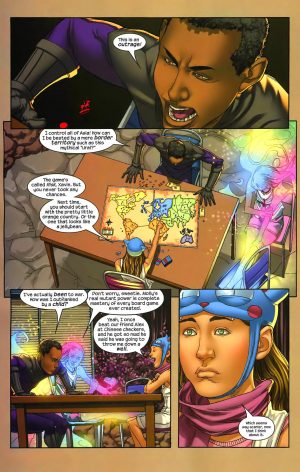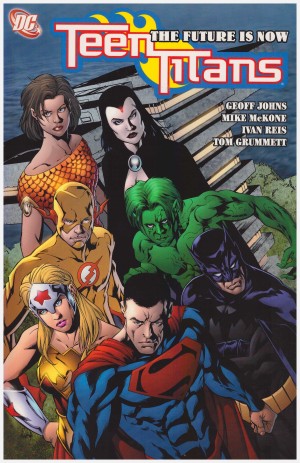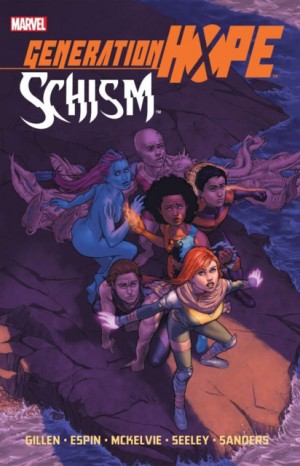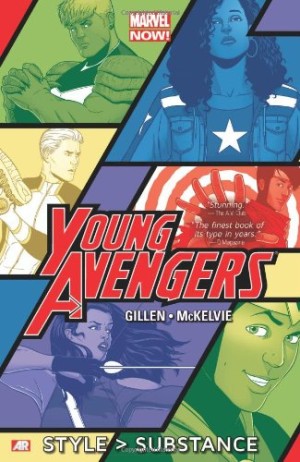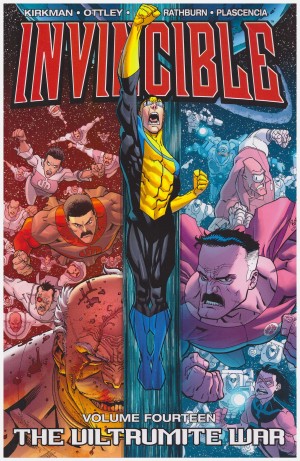Review by Frank Plowright
One complaint that certainly can’t be levelled against this bulky collection is that it lacks variety. It features several different creative approaches, starting with series creator Brian K. Vaughan’s final work, moving though Joss Whedon’s tenure and featuring two teamings with the Young Avengers during times of crisis for the Marvel Universe.
It’s the latter content that’s the weakest, although acceptable superhero comics. The meetings with the Young Avengers, however, intrude on the well balanced dynamics of the Runaways team. The first of them occurs during Civil War, padded by Zeb Wells to fill four episodes, and not very appealingly illustrated by Stefano Caselli. Chris Yost and Takeshi Miyazawa manage better during Secret Invasion, when the alien Skrulls invade Earth. This is problematical as both teams have a Skrull among their membership.
The primary Runaways continuity picks up after the shock ending to volume two (or Parental Guidance if following the trade paperback collections, where this is published as Live Fast). It results in some contemplative scenes to begin with, accompanied by some charming observations on the value of life and humanity, and that expands over Vaughan’s remaining chapters into thoughts on the spectrum of gender. The Runaways are kept busy by a giant monster terrorising Los Angeles, but the over-riding ethical question becomes how far Chase will sink to restore his idea of what’s right. It’s cleverly contrasted with the monster plot, and the remainder of Vaughan’s run is a series of complex emotional dramas that continually crank up the tension and remain unpredictable. They’re a joy to read.
Much the same can be said of Joss Whedon’s subsequent run. Knowing his stay on the title was finite, he produced a story with a beginning, middle and end, which also manages to intrigue along the way. Runaways thrives on the close bond between the team members, and Whedon emphasises that, and he also picks up on the idea of shifting membership and works well with that, his new characters rapidly seeming as if they’ve always been around. Every Runaways episode ends with one hell of a cliffhanger, and if anything Whedon betters Vaughan on that score. His major innovation is setting the bulk of the story in 1907, complete with all the prevalent attitudes to race, nationality, religion and gender. Again, a joy to read.
Mike Norton and series co-creator Adrian Alphona (sample art) draw Vaughan’s work, each of them sensitive to the emotional needs of the plot, and convincing with their depictions of teenagers and young children. Michael Ryan on Whedon’s story is a more traditional superhero artist, but very good at the period detail and action sequences.
Given the cost and subsequent plummet in quality in the fourth Complete Collection, anyone uncertain about the investment might find restricting themselves to the Live Fast and Dead End Kids paperbacks better value.
